- Learning time
- 40 minutes
- First play time
- 120 minutes
The Staufer Dynasty
Designed by: Andreas Steding
It’s the twelfth century. As Henry VI tours the Staufer family’s influential regions of eastern Europe, players represent nobles trying to impress the king by politicking these regions under your control. It’s a game of shifting sands and tactical chicanery…
But it’s also a game where the theme kind of evaporates on playing and it becomes more of an abstract puzzle of many parts. In each of the game’s five rounds, players will know the next region he’s going to move to; and so you can scheme in getting your envoys there ahead of time and looking like the big cheese by occupying either the most, or the most powerful, office seats. There are multiple office seats in each region (between three and five) and points will be awarded – when the king arrives – for first, second and third place holding influence in office. But how do you get your envoys into office?
Well, the king himself begins in a randomly-selected region and throughout the game, players are considered to be wherever the king is. When you want to send your envoys on to a different region, you must take a move/deploy action: traveling clockwise and pay in envoys: for the act of travelling (one envoy per region, placed in the region you pass through and arrive at) and for the act of assuming control of an available seat: each one costs X number of envoys to take it, and these must be also placed on the board, going clockwise from the region you take the seat in. Whenever you take a seat, however, you get to take the bonus book next to it: we’ll come to those shortly.
So with all the envoys needed there’s a demand for a large retinue. You begin with a small one but in each round you’ll take three actions; and when you’re not taking a move/deploy action – either because you can’t afford to or because tactically you have better ideas – you can take a supply action instead. A supply action is easy: it’s just a way of getting more envoys at your disposal – although the first player to take each available supply action in any round also gets to take a book as well. So let’s talk about books.
Although the Staufer Dynasty’s key economy is the ever-scurrying staff of envoys, books are critical to success. Each one either gives you points, or a very helpful one-use special power (eg free travel) or combine with other books in order to cash in a pair for a seal. Seals are similar to special power books, only better: they are not single-use, but instead give you ongoing benefits until the end of the game, or are worth considerable points.
At the centre of the board is a track that defines player turn order for your three actions-per-round, which changes depending on which players took which actions. It might initially seem an additional mechanical flourish, but turn order has considerable import in a game of the Staufer Dynasty! When the king moves for the last time and regions are scored, points are totted up for the final time too. Players will also have some hidden objectives to score for as well: dominating a particular region, say, or having seats of office dotted around according to a certain pattern. Most points: wins!
The guru's verdict
-
Take That!
Take That!
There's very little direct interaction - nobody can be forced out of a seat of office, or get their envoys stolen - but the game manages to feel cutthroat despite that, with office seats at a premium and each individual snagging of one causing conniptions around the table.
-
Fidget Factor!
Fidget Factor!
High on a first play, dropping to moderate. It's not a breezy game though - there's much puzzling to be done.
-
Brain Burn!
Brain Burn!
The Staufer Dynasty is a game of spotting opportunities and ideally preventing them for others at the same time. It certainly feels more like a puzzle than a story, but there is drama nonetheless.
-
Again Again!
Again Again!
Variable set-ups, scoring, books and objectives give the game minor variations on each play, whilst keeping the politicking flavour intact.

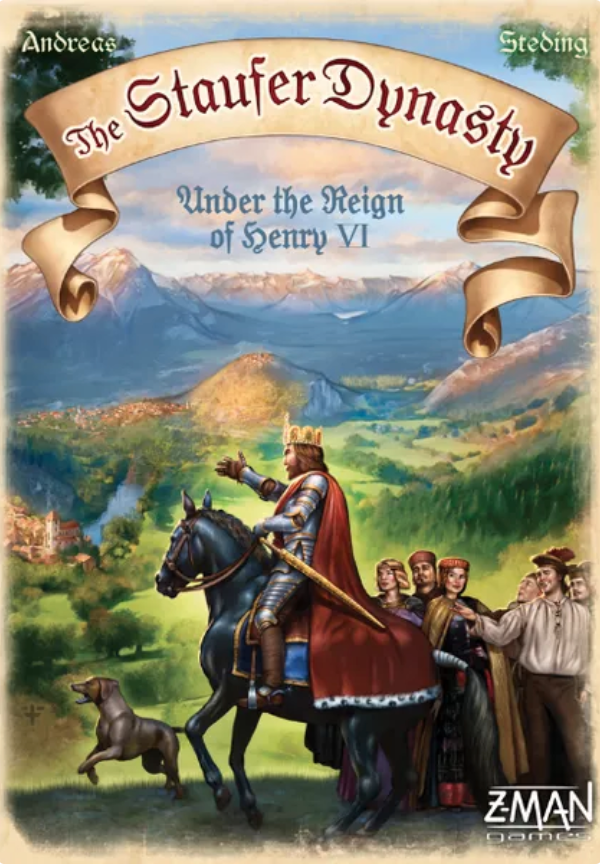


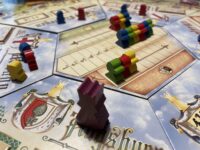
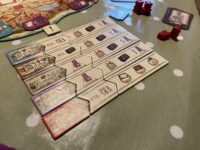
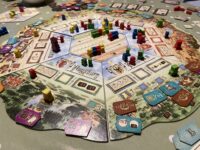



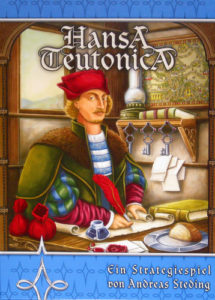

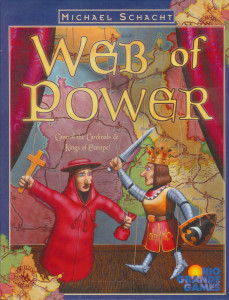

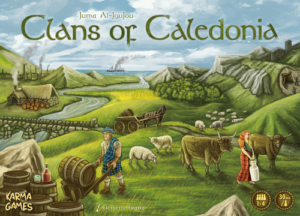
Sam says
Quite hard to explain the contest for office seats without picturing overpaid suits whizzing up and down bailed-out bank buildings on wheelie chairs, but despite the terminology The Staufer Dynasty is - once the fog of language and icons swims into focus - a game of tactical twists and dastardly drama. It's just very puzzle-like too, with a lot of swirling options to consider that may, for every gamer it delights, send another into despair. I enjoyed my play despite doing abymsally, but for reasons of narrative, accessibility and game pace, prefer this designer's excellent Hansa Teutonica. The Staufer Dynasty offers a similar atmosphere of shenanigans, and possibly even more variety if you're looking for a game to play a thousand times. But the theme is really an aside, and there's an inscrutability here that, whilst I know others love, I struggle with.